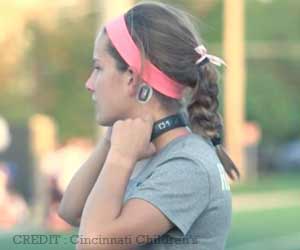
‘Headers may affect brain activity as evidenced by the blood samples of professional soccer players.
’
Tweet it Now
Results, published in the peer-reviewed journal Brain Injury, demonstrate “specific alterations” in the levels of the brain’s microRNAs — which are being recognized as blood biomarkers, associated with signaling pathways suggestive of brain alterations. Looking at accidental head impacts specifically; the experts found the microRNAs (biomarkers) affected links to several signaling pathways involved in brain activity.
When assessing heading, the experts detected deregulation of other microRNAs — linked to yet another molecular signaling pathway. Importantly, these microRNAs were found to be unaffected by other high-intensity exercises.
Reporting on the findings, Stian Bahr Sandmo, of the Oslo Sports Trauma Research Center at the Norwegian School of Sport Sciences, who led an international team of experts, says the research adds further knowledge to what we understand about head impacts in soccer.
“This is a relatively small sample-size exploratory study,” he says, “but, future findings expanding upon our research could ultimately lead to an improved understanding of the potential hazardous effects of repetitive head impacts. With millions of people playing soccer worldwide this might ultimately have a substantial influence on public health.”
Advertisement
They help regulate gene expression — the process by which the instructions in our DNA are converted into a functional product, such as a protein. They are involved in many different physiological processes.
Advertisement
Until now, the effects of soccer-related head impacts on microRNAs have been largely unexplored.
In this new research, the team of multidisciplinary specialists wanted to uncover whether these head impacts change the levels of microRNAs — therefore reflecting short-term effects in the brain.
The results were then compared to other high-intensity exercises. Depending on the findings, this would further add or detract to the growing evidence for microRNAs to be used as biomarkers for brain injury.
Blood samples were collected from 89 professional soccer players at rest. The players were aged 18 to 35 and were actively playing in the Eliteserien (the Norwegian premier league). Repeat samples were drawn after one hour, and again at 12 hours, following three conditions:
- accidental head impacts in a match (defined as any situation where a player appeared to be hit in the head, face, or neck, the match was interrupted by the referee and the player remained lying on the ground for more than 15 seconds)
- repetitive headers during training
- high-intensity exercise (as the effects of rigorous physical activity alone had to be accounted for, to isolate microRNAs specific to the brain injury and not just those affected by exercise).
When looking at accidental head injuries, their findings show the deregulation of eight microRNAs unaffected by high-intensity exercise; the target genes identified were linked to 12 signaling pathways, including the Wnt pathway — which, research suggests, may promote nerve cell regeneration following TBI.
This also included Hedgehog signaling which has been found (in animal studies) to reduce nerve cell death and damage after TBI.
Repetitive headers were found to alter the levels of six microRNAs and were associated with TGF-β signaling. Previous research has reported elevated TGF-β levels in the fluid surrounding the brain after TBI, suggesting it might play a role in anti-inflammatory and neuroprotective signaling.
“Overall,” the expert team state, “the findings do add further evidence to demonstrate how microRNAs may be used as brain injury biomarkers. These have the potential to differentiate injury severity and to discriminate between types of head impacts seen in soccer, if reproduced in further studies.”
Limitations of this current research include relatively small sample size and that head-impact exposure was characterized using direct observation and video analysis — meaning the team was not able to quantify the biomechanical magnitudes of the impacts in the different conditions.
Source-Newswise











